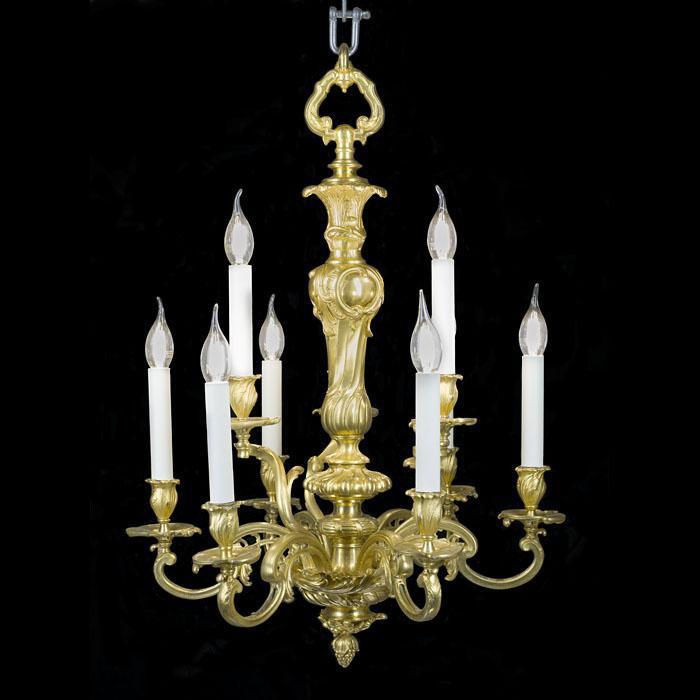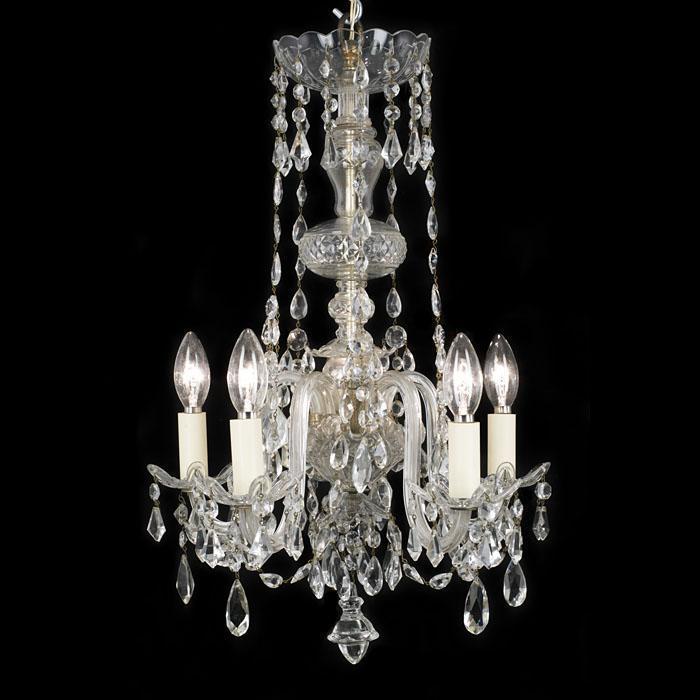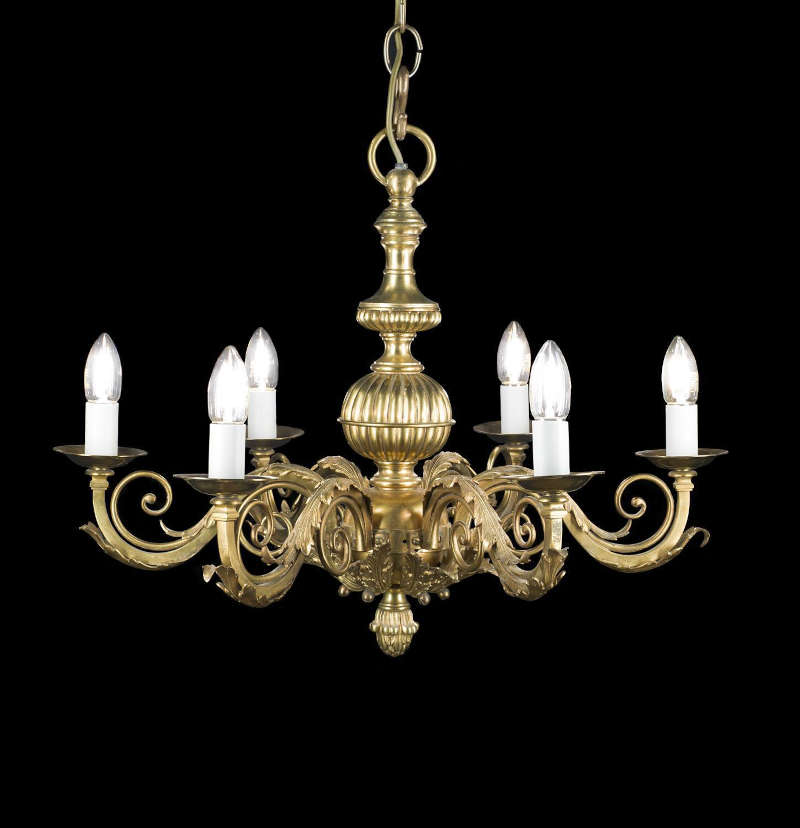In this article, we’ll explore in-depth several types of antique chandelier. We’ll run through the changing chandelier styles by era.
The most expensive antique chandelier purchased at auction is a beautiful 1736 Givenchy Royal Hanover German silver chandelier. It was sold for a staggering £5.75m at Christie’s in 2011.
The first thing to note is that it takes more than a chandelier merely looking like an antique for it to actually be one. Many manufacturers today still design their own chandeliers to have a traditional style for classic appeal.
To confirm whether different types of chandelier are antiques, check for one of these signs:
- Hand-cut, opaque crystal or glass: The glass or crystal may not be completely symmetrical, or there’s no sign of moulded glass used. The glass may also have imperfections, or a grey-ish tone
- Patina: This can be seen on the small metal parts holding the glass or crystal together
- No wiring - or they were wired later: Most antique chandeliers from the 1800s or before were lit by gas or candles. Look for metal or glass hollow tubes, indicating gas power was used. Some had electrical wiring added afterwards, in which case it may be visible
Here are some notable chandelier styles by era:
Baroque Chandeliers
By contrast, the Baroque era is notable for marking the start of the usage of rock crystals in chandeliers
Previously, in the Middle Ages, most types of chandeliers looked somewhat functional. By contrast, the Baroque era is notable for marking the start of the usage of rock crystals in chandeliers.
A typical Baroque chandelier had an open frame or birdcage structure. It was made of gilded bronze and ornamented with cut rock crystals.

× 
Rococo Chandeliers
As was typical of many Rococo creations in the 1700s and during the reign of Louis XV, their design can be interpreted as a development from the formal grandeur of the Baroque style to something more organic in design.
French rock crystal chandeliers had been very lavish and ornate by the late 1600s during the reign of Louis XIV, setting a benchmark for royal prestige.
However, the different types of chandeliers in the Rococo era were often made of bronze and more likely to feature intricate, detailed motifs - often involving engraved leaves and flowers and shells.
Neoclassical Chandeliers
Yet by the later 1700s and early 1800s, artists and designers perceived Rococo design as too decadent as well.
They embraced simpler types of chandelier, strongly influenced by mythology as well as ancient Greek and Roman aesthetics.
For example, an architect we’ve written about in depth, Robert Adam, inspired long and slender crystal chandeliers in a Greek urn shape.
French manufacturer Baccarat, known for creating chandeliers with impressive hanging prisms, also built a global reputation in the 1800s.

× 
Georgian Chandeliers
Also, you can often identify Georgian crystal by its blue-grey tint
The most well-known examples of Georgian types of chandelier, designed by glassmaker William Parker, are in the Bath Assembly Rooms.
Instead of the previous ball-shaped stem design, Parker brought in a slender vase-shaped concept which quickly became the Georgian style.
Georgian chandeliers became bigger too and manufacturers began to include a stamp with their name, so that they were easily identifiable. Also, you can often identify Georgian crystal by its blue-grey tint.
Regency Chandeliers
Similarly, the designers added chains of crystal drops underneath, which resemble a bag
Regency-style chandeliers are known for their distinctive shape, the ‘tent and bag’.
As a result of an 18th century glass tax imposed on English manufacturers, they began using crystal drops to cut costs.
They strung these together and hung them from the top of the chandelier, creating a tent shape, as an alternative to more expensive glass ‘arms’.
Similarly, the designers added chains of crystal drops underneath, which resemble a bag.

× 
Victorian Chandeliers
Chandeliers from the Victorian era were extravagant, usually grabbing attention using glass, crystal, beads or other decorations.
Most had a narrow top, were wider at the bottom and had gas lights or candles placed around the centre.
The often glossy metals - whether silver, gold, bronze or brass - stood out.
Final thoughts: chandelier styles by era
From the late 1800s onwards, arguably the biggest impact on all different types of chandelier design was the introduction of electricity.
Chandeliers began to include more hollow space for electric wiring, while the use of candles declined as a result.
As mentioned, when looking for antiques, remember that to this day manufacturers continue to design chandeliers in the style of the 18th and 19th centuries.
To make sure you’re only seeing authentic antique chandeliers, only go to dealers who are registered with respected associations such as LAPADA or CINOA.
For more information about the varying types of chandeliers, or to enquire about any antique chandeliers in our collection, please don’t hesitate to contact us.